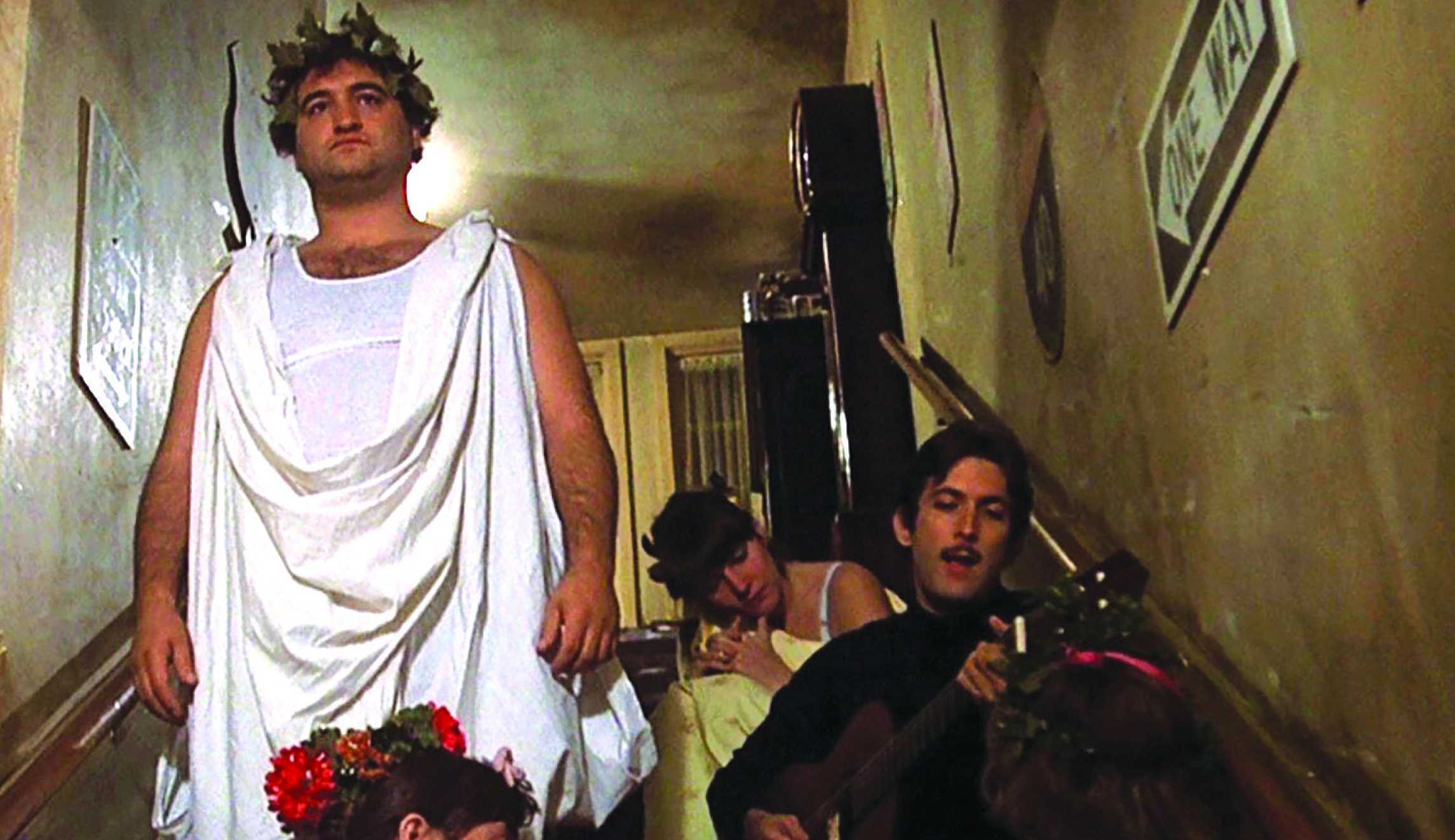As the incidence of COVID-19 wanes, so does the justification for masks and other plague-panicky mandates. This is a disappointment for those who savored the whole mask business as an opportunity to demonstrate one’s decency outwardly — the proof of one’s commitment to obey science bureaucrats and municipal poobahs was right there covering one’s face.
Some seven years ago in the Spectator, James Bartholomew lamented “the awful rise of ‘virtue-signaling,’” the odious modern practice of declaring one’s merit by driving a Prius, wearing sustainable sneakers, eating cage-free tofu, and drinking cruelty-free kombucha.
And strapping on masks. Masks will grudgingly go away, but virtue-signaling isn’t going anywhere. It may be obnoxious, it may be presumptuous, it may be obloquious, but parading one’s moral superiority is just too satisfying to give up, which is why I think there’s a need for a counterweight for virtue-signaling, what we might call vice-signaling.
Think of the toga party scene in Animal House. A young man with a guitar is wooing some girls with folk pap (“I gave my love a cherry that had no stone…”). Along comes John Belushi, who gives a little listen before grabbing the guitar and smashing it. The singer was virtue-signaling; Belushi was vice-signaling.
Vice-signaling isn’t just a fancy phrase for being rude. Rather (and with apologies to Aristotle), vice-signaling is about being rude to the right persons, to the right extent, at the right time, with the right motive, and in the right way. Aristotle can’t tell us what all those rights are and suggests we learn through experience. Examples from art can help. To get the feel for it, go back and watch Caddyshack again. Ted Knight is the avatar of uptight self-regard. When he launches his preposterously small yacht, his nemesis, Rodney Dangerfield, comes charging across the bay, klaxon horns blaring, throwing a monstrous wake. His carelessly dropped anchor sinks Knight’s pitiful dinghy. “Hey!” shouts Dangerfield, a master of vice-signaling, “your boat scratched my anchor!”
Of course, the problem these days isn’t the self-satisfaction of the country club set. They do not loom large in the culture and, in any case, have the good taste (and even better sense) to enjoy themselves behind privet hedges. No signaling there. Those doing the virtue-signaling these days are the woke proselytizers who are free from doubt and always at the ready to display the trappings of their superior enlightenment, especially if it is distressing to the bourgeoisie. Athletes taking a knee for the national anthem was a perfect example of the phenomenon. It was a public spectacle. It shocked the sensibilities of the average Joe. It announced a new and ostensibly improved catalog of virtues. And those doing the signaling were quite pleased with themselves.
Vice-signaling is in many ways the same. Let’s say that you and your neighbor each need to buy a car. Your neighbor, in a fit of virtue-signaling, buys a grotty little Chevrolet Bolt electric vehicle and pays over $30,000 for it. You, on the other hand, buy a wonderful 1989 Bentley Turbo R for about $25,000. The mere purchase of such a vehicle will be seen as a declaration of vice. But you can do even better: You make sure to park it on the street in front of your neighbor’s house where it takes up all the spaces within reach of his extension cord. (He can’t park it in his garage because Chevy Bolts have a nasty habit of bursting into flames if left in a confined space.) You will have displayed your aesthetic while annoying and inconveniencing those who disagree with you. Oh yes — you get to be pleased with yourself. It’s a vice no doubt, but one no worse than what passes for virtue these days.
Eric Felten is the James Beard Award-winning author of How’s Your Drink?








